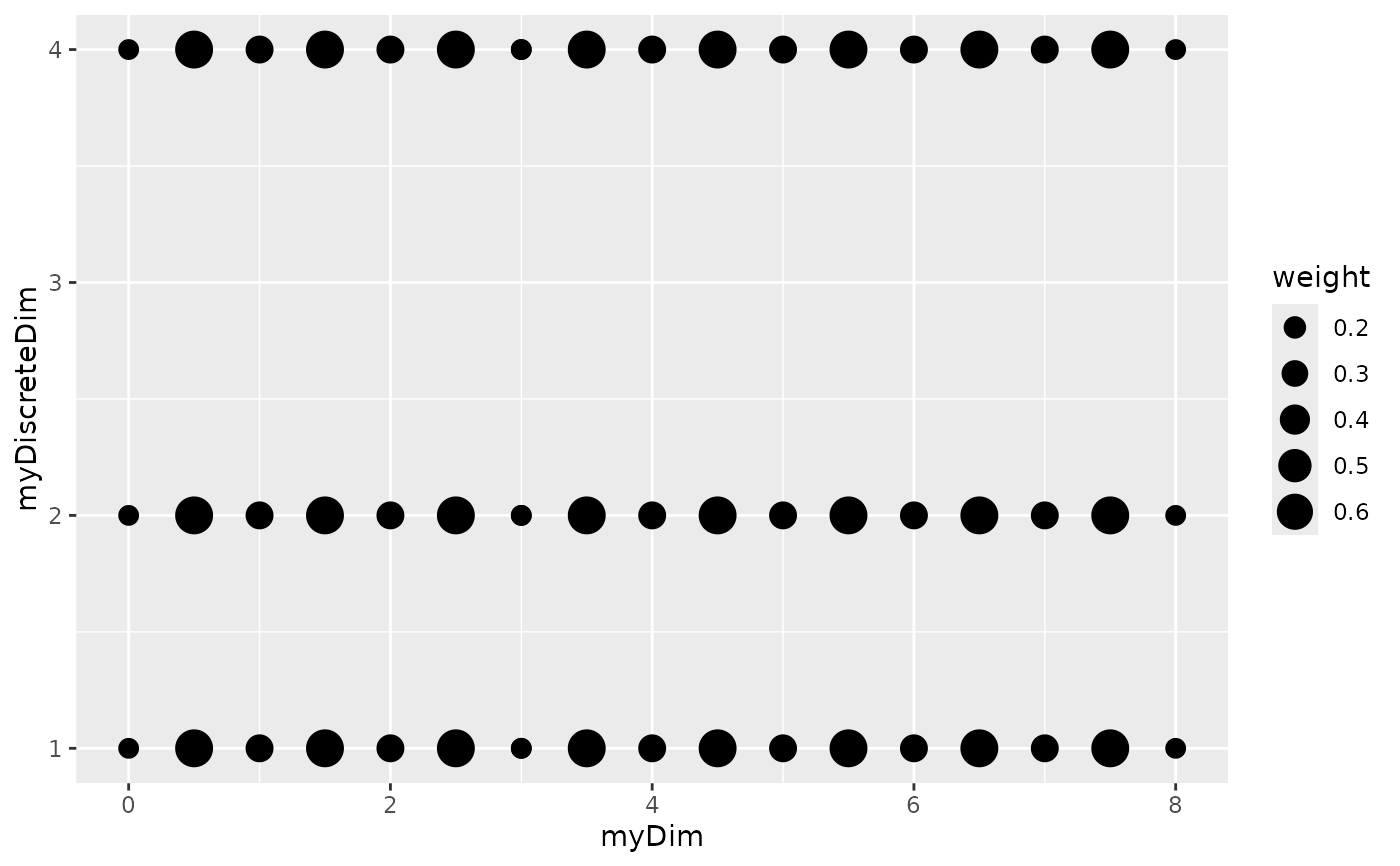Calculates the groupwise cross product of integration points in different dimensions and multiplies their weights accordingly. If the object defining points in a particular dimension has no weights attached to it all weights are assumed to be 1.
Arguments
- ...
tibble,data.frame,sf, orSpatialPointsDataFrameobjects, each one usually obtained by a call to anfm_int()method.- na.rm
logical; if
TRUE, the rows with weightNAfrom the non-overlapping full_join will be removed; ifFALSE, set the undefined weights toNA. IfNULL(default), act asTRUE, but warn if any elements needed removing.- .blockwise
logical; if
FALSE, computes full tensor product integration. IfTRUE, computes within-block tensor product integration (used internally byfm_int()). DefaultFALSE
Value
A data.frame, sf, or SpatialPointsDataFrame of
multidimensional integration points and their weights
Examples
if (require("ggplot2")) {
# Create integration points in dimension 'myDim' and 'myDiscreteDim'
ips1 <- fm_int(fm_mesh_1d(1:20),
rbind(c(0, 3), c(3, 8)),
name = "myDim"
)
ips2 <- fm_int(domain = c(1, 2, 4), name = "myDiscreteDim")
# Calculate the cross product
ips <- fm_cprod(ips1, ips2)
# Plot the integration points
ggplot(ips) +
geom_point(aes(myDim, myDiscreteDim, size = weight)) +
scale_size_area()
}
